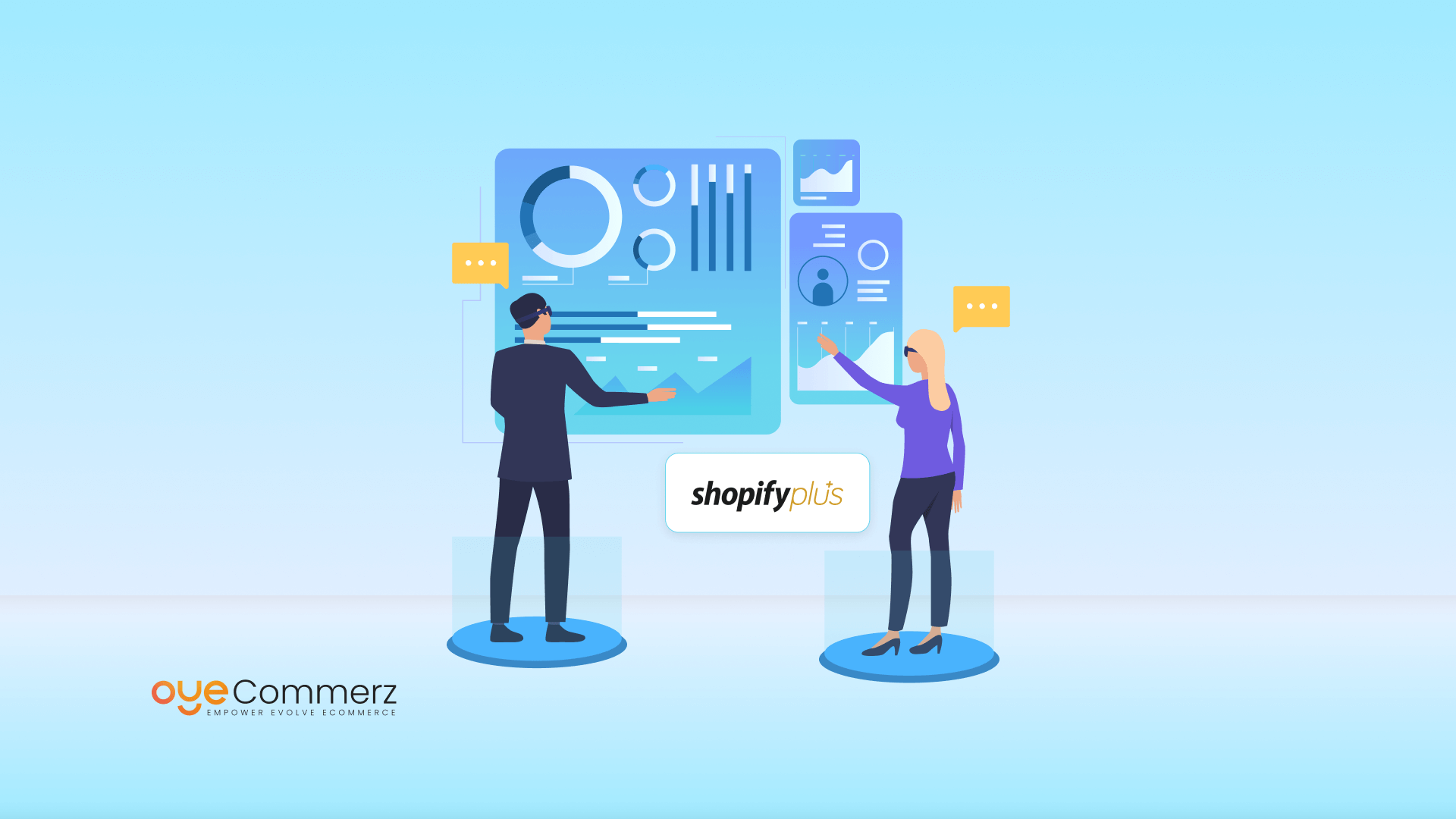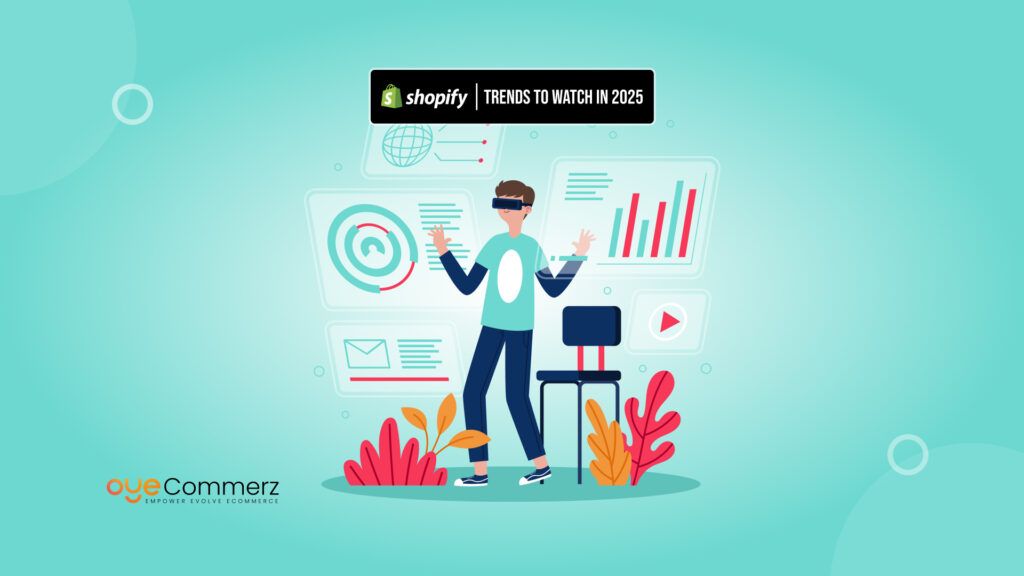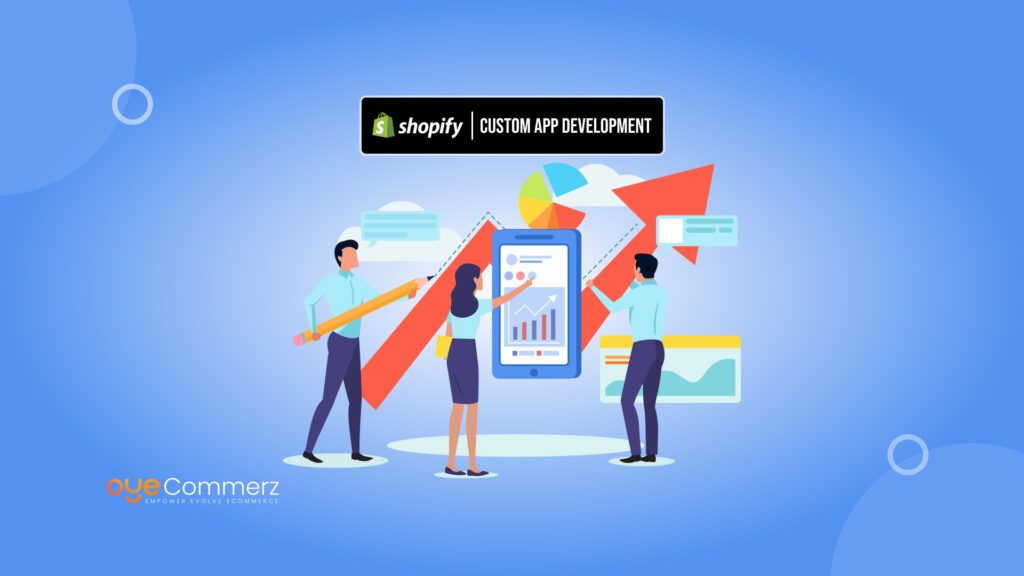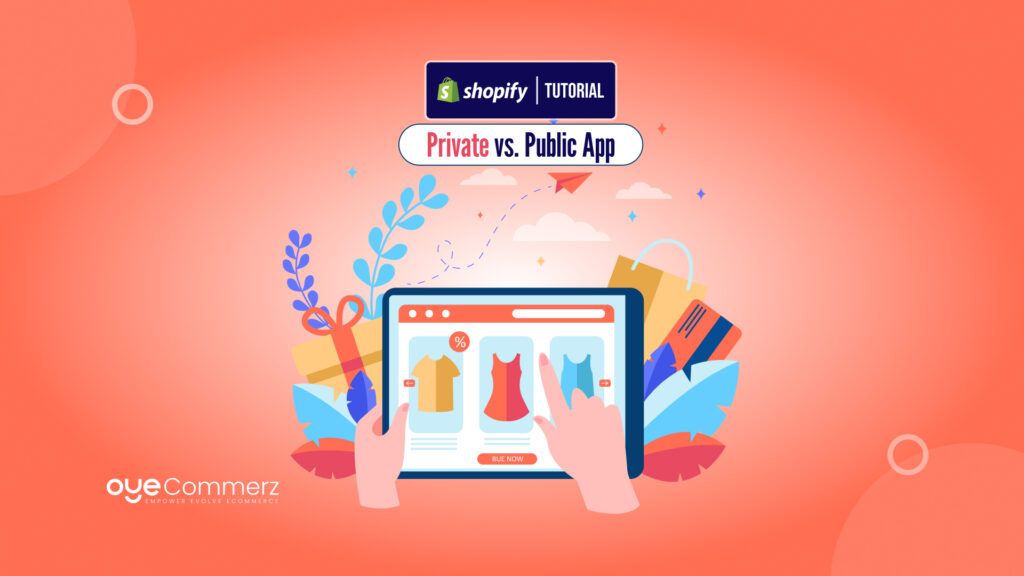E-commerce is a dynamic field and analyzing your store data as well as the behavior of the customers visiting it is highly important to succeed. Analytical processing helps get a deeper understanding of the situation and elaborate proper strategies to improve the overall effectiveness of business processes and the company’s profits.
As one of the most advanced platforms, Shopify Plus is an ideal choice for successful merchants with a large number of online stores; it provides a set of useful analytics tools to ensure the business’s success. This blog will lead you step by step through the way of configuring advanced analytics in Shopify Plus and help you get the most out of your store. As a full-service Shopify development company, we are dedicated to guiding you through these advanced features to maximize your store’s performance and growth.
Table of Contents
ToggleConversion Rate Stats - Shopify
If a Shopify store has a conversion rate exceeding 3.7%, it ranks among the top 20% of Shopify stores. A conversion rate above 5.2% places the business in the top 10%. Conversely, a conversion rate below 0.5% indicates that the store is in the bottom 20% of the marketplace. Additionally, a conversion rate under 0.1% signifies that the business is one of the poorest performers.
What is Shopify Analytics?
Shopify Analytics is a set of tools that allow the store owner to monitor all the basic aspects of the business and their site. Sales reports, customer behavior, marketing campaigns, and various other reports are all available in one single report. These analytics tools are developed to provide insights on how to enhance customer experience with Shopify Plus, helping merchants identify what more is needed and where changes need to be made.
Shopify Analytics Essential Points
- Dashboard: Current figures of overall sales, mean value of orders, site visits, and ratio of repeat customers.
- Reports: Including the areas of the sales report, acquisition report, behavior report, finance report, and marketing report.
- Live View: Real-time look into the activities on your store, actions taken by the visitors, where they belong, and what active transaction is taking place.
- Custom Reports: Personalized reports to display related activities for better understanding and monitoring of related indexes vital to the running of any kind of business.
Why Do We Need Shopify Analytics?
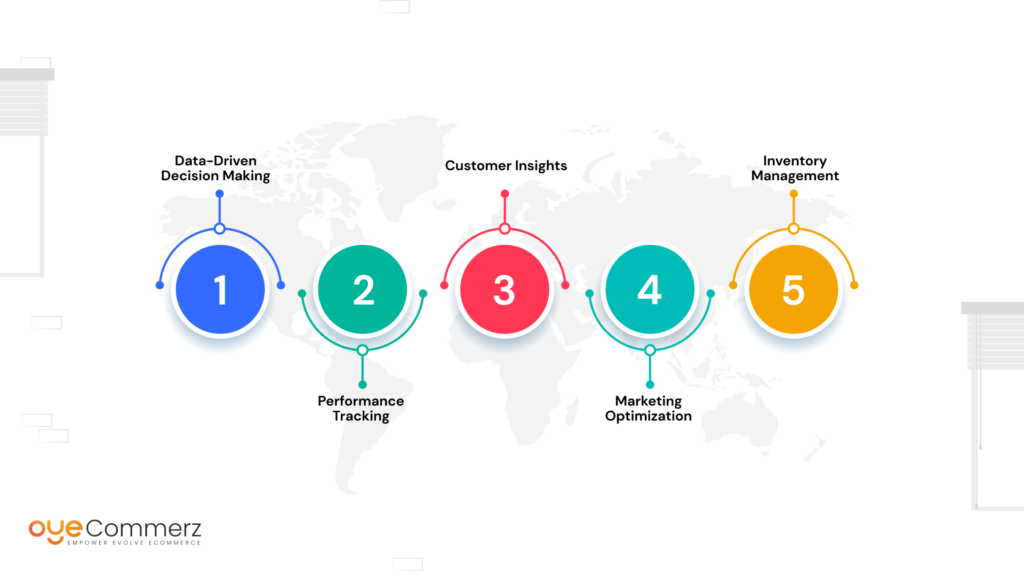
It is crucial to comprehend the importance of Shopify Analytics to reach greater potential with its usage. Here are some reasons why advanced analytics is indispensable for Shopify Plus stores:
Data-Driven Decision Making
Analytics helps to eliminate the guesswork in decision-making since it has facts that act as a foundation for decisions. Regular sources of data help improve the strategies to conform with the trends and requirements of the customers.
Performance Tracking
Remain focused on certain metrics including the conversion rate the cost of acquiring a customer and the lifetime value of the same. This also assists in measuring the returns of your marketing strategies together with the general performance of the business.
Customer Insights
Empower your company to have a closer look at your customers’ behavior, inclinations, and buying habits. This knowledge helps you to better adjust your portfolio and services, step up clients’ satisfaction, and enhance rates of their recurring usage.
Marketing Optimization
An example of a metric-based evaluation is to assess the traffic source and CTR, as well as the marketing campaign’s conversion rate. By following SEO tips for Shopify Plus stores, you can accurately determine your optimal expenditure on marketing efforts, thus maximizing the overall return on investment.
Inventory Management
Sophisticated analysis allows for better inventory monitoring, as well as the reveal of popular goods and the prediction of the demand for them. This helps to put the right stocks in place by avoiding situations where there is either a lack of certain products or there are excess stocks of some products.
Setting Up Advanced Analytics in Shopify Plus
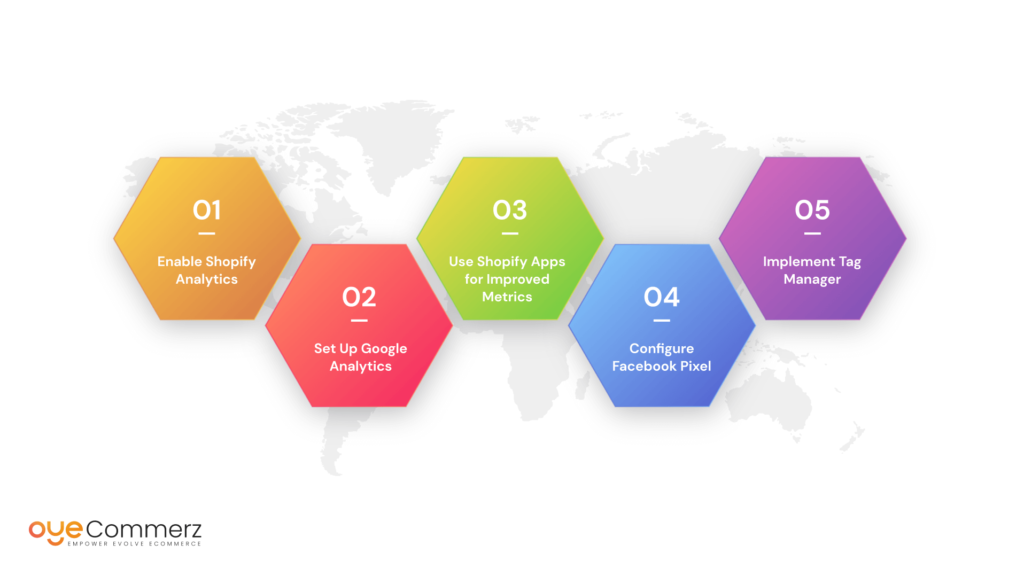
Implementing advanced analytics in Shopify Plus requires several steps which include enabling out-of-the-box functions and using third-party analytics applications. Read this so that you can get as well as analyze the data correctly.
1. Enable Shopify Analytics
Shopify Plus comes with built-in analytics tools that are easy to set up:
- To access the Analytics option, go to the admin panel of the Shopify site.
- Go to different Papers for instance; Sales, Acquisition, Behavior, Finance, and Marketing papers.
- Turn full control of your virtual cockpit and decide which indicators are important to your company.
2. Set Up Google Analytics
The second app recommended is Google Analytics, which gives a much deeper insight into what is happening with the website and its visitors. Here’s how to integrate it with Shopify Plus:
- If you have none, sign up for a Google Analytics account.
- Go to the Admin panel of Google and obtain your Tracking ID.
- In Shopify, navigate to the Online Store menu and select Preferences from it.
- To do this, you have to paste the tracking ID into the GA account field.
- Switch on Enhanced E-commerce in Google Analytics Settings to measure product impressions, sales, and users’ shopping behaviors.
3. Use Shopify Apps for Improved Metrics
In the case of Shopify, there are hundreds of apps available online that supplement the analytics provisions available on the website. Some popular options include:
- Lucky Orange: Offers heatmaps, session recordings, and the functionality to view the conversion funnel.
- Klaviyo: Provides rich data on the email marketing results and tools for its automation.
- Metorik: An all-in-one reporting app for Shopify stores to get all the necessary insights in one place.
4. Configure Facebook Pixel
If you run Facebook ads, setting up Facebook Pixel is crucial for tracking conversions and optimizing ad performance:
- Log in to the Facebook Business account and navigate to the Events Manager section.
- Develop an advertisement pixel on Facebook and note down the numeric code beside it.
- To navigate to this section, log in to Shopify, select the Online Store option from the menu, and choose Preferences.
- Copy & paste the Pixel ID into the Facebook Pixel input.
- Select Advanced Matching to get better tracking statistics with the help of customer data.
5. Implement Tag Manager
Google Tag Manager simplifies the process of adding and managing multiple analytics and marketing tags:
- Open the corresponding account at Google Tag Manager and generate a new container.
- This is the container code, please copy it and paste it to your Shopify store’s theme. liquid file.
- Add tags from the Google Analytics tracker, Facebook Pixel, and other programs, if you have them.
- Engage the use of triggers and variables to adjust the application and capture specific events.
Related Read: Creating Effective Marketing Campaigns with Shopify Plus
Things To Remember
Data Privacy and Compliance
Recommend that your file collection protocols keep up with legal policies like GDPR and CCPA. Explain to customers regarding the types of data you collect from them and how they can prevent their data from being used.
Accuracy and Consistency
Creating a culture that is locked on analytics means that you should check it frequently for accuracy. The variation of data also means that all decisions being made must meet the standard of data integrity.
Customization
Ensure the analytics are properly configured according to the business requirements. Report on the matters that are more relevant to the cause of the goal and achievement.
Continuous Improvement
Benchmarking falls under analytics and it is a continuous process. Never stop tracking your and your competitors’ actions, evaluating stemming conclusions, and improving your plan.
Training and Support
Encourage your team members to go through training so that they can adequately use analytical tools. Also, the customer help section of Shopify should be taken as a resource, and community forums should be used for help.
Transform Your E-Commerce Business with OyeCommerz
Elevate your digital footprint, streamline your operations, and enhance customer satisfaction with our innovative solutions. At OyeCommerz, we employ strategic methods to transform your store and drive success. Our comprehensive training and support empower you to excel with Shopify Plus, paving the way for sustained profitability. Partner with OyeCommerz to unlock exceptional eCommerce opportunities and expand your business. Contact us today to embark on your path to enduring success!
Contact to Migrate your Site to Shopify Now
Conclusion
The fourth and final element of e-commerce is advanced analytics, a fundamental aspect in improving e-commerce businesses. With advanced analytics tools and integration options included in Shopify Plus, all the necessary information can be easily collected and analyzed on this platform. Applying SEO tips for Shopify Plus stores alongside these advanced analytics can further enhance your store’s performance.
By establishing computerized analytical tools, you provide your organization with more data and insights to tackle a competitive business climate and make well-informed decisions for maximum efficiency.

